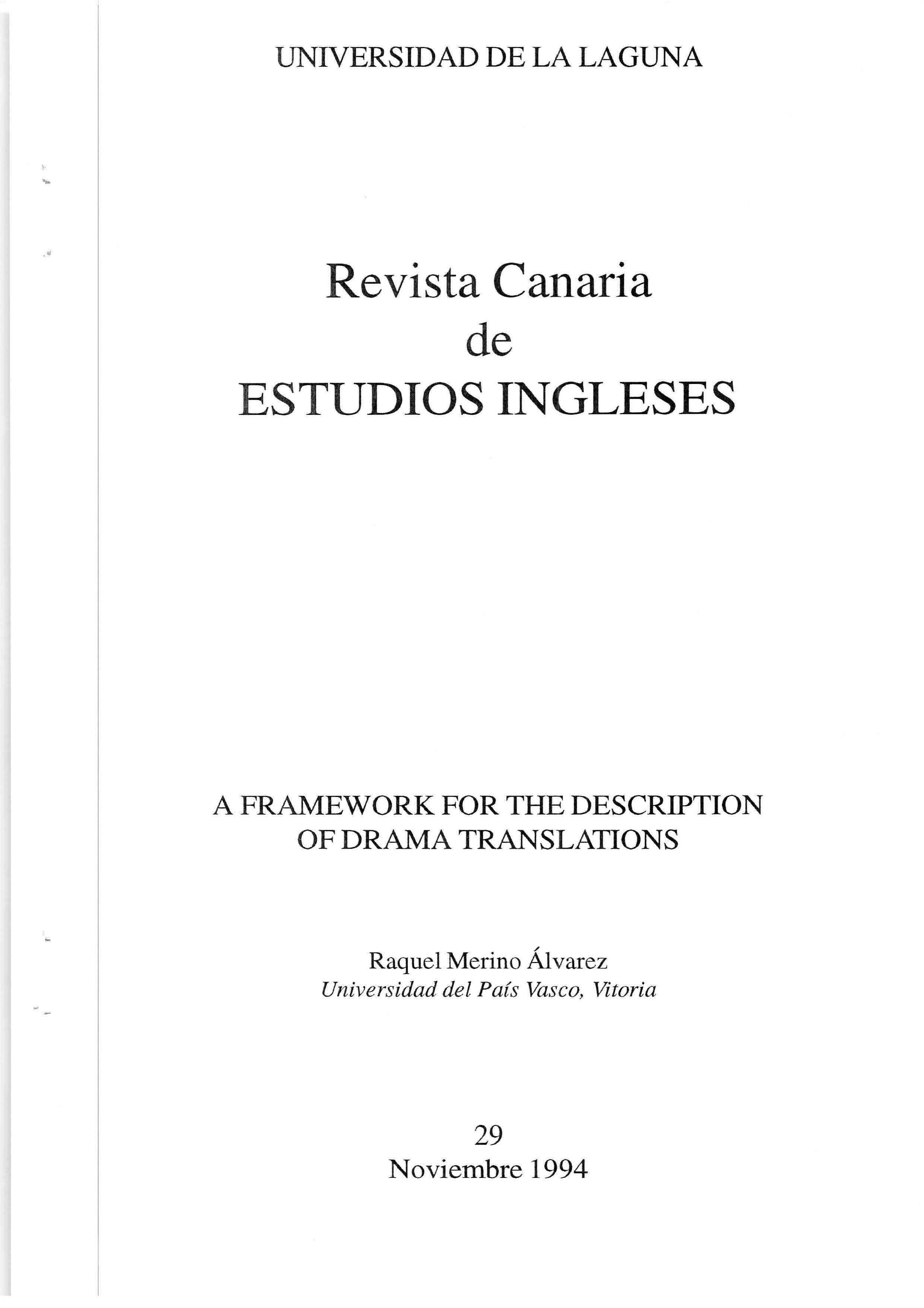A framework for the description of drama translations
Data
1994-11
Revista Canaria de Estudios Ingleses 29 : 127-140 (1994)
Laburpena
[EN] The purpose of this paper is to to propose a framework for the description of translated playtexts. The object of study is (interlingual) translations (from the 1950s to the 1980s, English into Spanish) rather than the (intralingual) translation or transposition of plays from page to stage. In attempting to study and describe translated theatre, one is faced with key issues, such as whether the description of plays is in anyway different from that of novels or poems, and where lie the limits of its specificity. The twofold nature of drama, written-to-be-performed, is a fundamental question in any approach to this field of study and most of the ways in which it differs from other literary products stem from this dual nature. The framework we suggest (an adapted version of the four-state scheme by Lambert and Van Gorp, 1985) starts with the registration and analysis of preliminary information about each translated playtext recorded, followed by the (macro and micro) textual analysis of Source Text-Target Text pairs, which are further examined in the fourth intersystemic stage. In all levels the dual nature of theatre is contemplated, specifically in the textual analysis with the use of the replica or utterance, the minimal structural unit of drama texts. To exemplify how the four-stage scheme is used, three case studies are considered: the 1971 translation of Our Town/Nuestra Ciudad by Thornton Wilder, Arnold Wesker’s 1973 The Kitchen/La cocina and 1980 Arthur Miller’s A View from the Bridge/Panorama desde el puente.
 Itzuli
Itzuli
